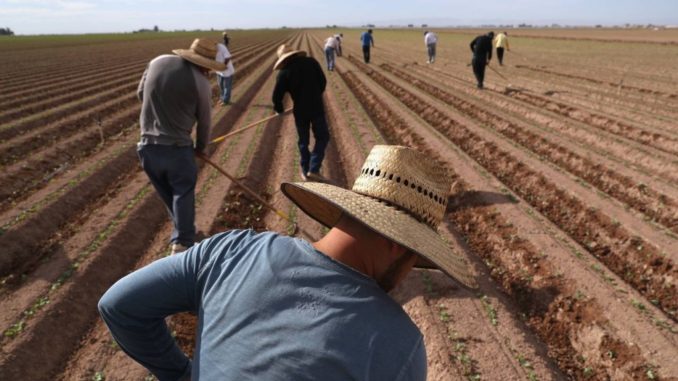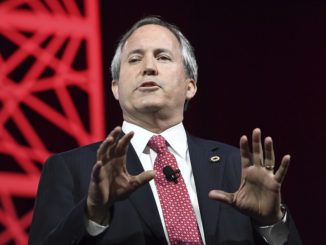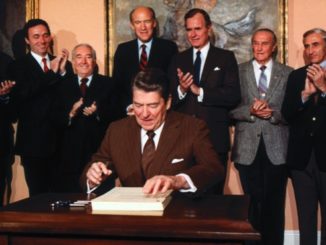
by Greg Ip, WSJ
As population ages and fertility rate falls, building up the labor force will be tougher without immigrants
Donald Trump hopes to deliver growth above 3% in the coming decade, which would be hard in the best of times. He and some of his fellow Republicans seem intent on making it even harder by putting the brakes on immigration.
It is a basic rule of economics that a nation’s output depends on the number of people it employs and how productively they work. The Federal Reserve, the Congressional Budget Office and most private economists think output will grow a mere 2% per year in the next decade. To beat the consensus, Mr. Trump and Republicans need to find ways to get the labor force or productivity to grow much more quickly.
That could mean getting millions of Americans who have quit the labor force to return. But it’s a tall order because the population is aging. That leaves immigration. Yet Mr. Trump campaigned on limiting legal and illegal immigrants, citing the need to protect jobs and public safety. His administration has already expanded deportation of illegal immigrants. Two weeks ago Tom Cotton and David Perdue, Republican senators for Arkansas and Georgia, respectively, introduced a bill that would cut annual legal immigration in half, to 539,958 by the 10th year.
Current legal and illegal immigration, net of emigrants (those who leave), is now around 1 million per year, or just 0.3% of the existing population, below the 0.4% average since 1790, according to an exhaustive study last year by the National Academies of Sciences, Engineering and Medicine.
That relatively modest number looms especially large in the future of the U.S. for one simple reason. Because of falling fertility rates, the natural rate of U.S. population growth (births minus deaths) has fallen to 0.4%, its lowest since the founding of the republic. On current trends, it will only get closer to zero, which means immigration will account for all the growth in the labor force.
Immigration’s economic significance is greater than even these numbers indicate for two reasons. First, immigrants are usually younger than the native born population: about 65% are working age, between 25 and 64, compared with 52% of the native-born. Also, among immigrants just 5% are over 65, compared with 15% of the native born. Second, immigrants will have children who will bolster the labor force in later decades. The contribution from the children of native-born parents “will simply be outnumbered by the flood of departing baby Boomers,” the NASEM study says.
Consider this: The working-age population grew on average 1.4% per year from 1965 through 2015, when economic growth averaged 3%. The Pew Research Center estimates that at current immigration rates, the working-age population will grow just 0.3% per year in the coming two decades. With half a million fewer immigrants per year it grows just 0.1%, and with 1 million fewer, the working-age population shrink by 0.1% per year.
By contrast, when immigration was last curtailed in the 1920s and 1930s, the long-term consequences were masked by the baby boom, which began around the time the missing immigrants’ children would have entered the labor force. Ending immigration now wouldn’t turn the U.S. into Japan, whose fertility rate is far lower, but it would put the U.S. in a situation it has never seen before: near-zero population growth.
Does it matter if the U.S. population stops growing? In theory, an American isn’t richer or more productive just because the population is larger. Reduced immigration is mostly a loss for the would-be immigrants, not the host country. Reality is different because immigrants differ in two crucial ways from the native born. First, because they’re younger, they shoulder some of the cost of pensions and health benefits for the soaring retiree population, which are adding to budget deficits. According to Pew, the number of retirees per 100 workers will climb from 27 now to 48 by 2065 on current trends. This ratio hits 56 with no immigration.
Second, they tend to bring skills that are in great demand. A recent National Bureau of Economic Research study by John Bound, Gaurav Khanna, and Nicolas Morales found that the influx of tech workers using the H-1B visa, a permit for skilled workers, during the late 1990s depressed the wages of U.S. computer workers and scientists by 3% to 10% but made the overall country better off by boosting innovation and reducing prices for consumers.
Mr. Trump’s anti-immigration stance clearly struck a chord with millions of voters worried that rising ranks of foreign-born, in particular the undocumented, threatened their jobs, the character of their communities, the nation’s borders and national security. Nor is the existing system economically optimal: It prioritizes family reunification over highly educated professionals. Yet if Mr. Trump is to deliver the growth he promised, he will have to reconcile those anxieties with the demographic vise of an aging society.



